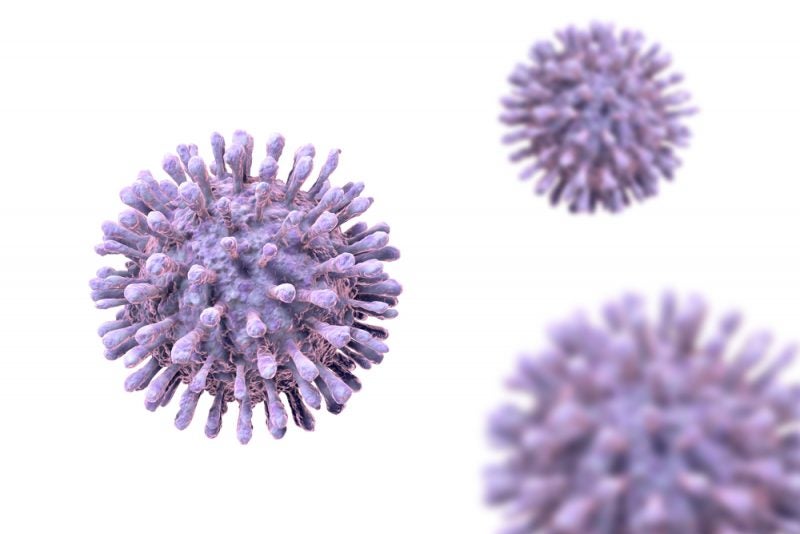
For the past five years, ViiV Healthcare (a global specialist HIV company) has been collaborating with the University of North Carolina at Chapel Hill. Together, the two entities have been focused on discovering a cure for HIV.
In March this year, the two announced that they would renew their partnership for another five-year stint. Through bringing together academic and industrial expertise, this $20m collaboration aims to develop an entirely new therapeutic approach to the virus.
“The collaboration was founded out of the idea that we would likely not make progress toward curing HIV as individuals and that together we stood a better chance to move forward,” says Richard Dunham, director of HIV Cure at ViiV Healthcare. “The partnership involves financial support from both ViiV and UNC, staff from both institutions, and specialised support from both institutions.”
From the University of North Carolina side, this means clinical expertise, along with physical space and logistical support. ViiV Healthcare, meanwhile, brings knowhow in drug discovery and drug development, as well as access to broader support from its parent company, GlaxoSmithKline.
The two will continue to work at the HIV Cure Center, which is located on the UNC-Chapel Hill campus and directed by Dr David Margolis. They have also co-founded a small biotech called Qura Therapeutics, which handles the business side of the partnership.
“The HIV Cure Center is at the forefront of HIV latency reactivation and clearance research, and Dr Margolis and his research teams are recognised as world experts in this field,” says Dunham. “This unique public-private partnership is redefining the traditional way of conducting research, as we seek the breakthroughs needed to tackle this extraordinarily challenging global health issue.”
How well do you really know your competitors?
Access the most comprehensive Company Profiles on the market, powered by GlobalData. Save hours of research. Gain competitive edge.

Thank you!
Your download email will arrive shortly
Not ready to buy yet? Download a free sample
We are confident about the unique quality of our Company Profiles. However, we want you to make the most beneficial decision for your business, so we offer a free sample that you can download by submitting the below form
By GlobalDataThe progression towards a cure
Over the past few decades, the face of HIV research has changed beyond all recognition. Once a death sentence for anyone who caught it, the virus can now be managed with combination antiretroviral therapy, and can even be suppressed to undetectable levels. Assuming they adhere to their treatment regimen, those with HIV can live essentially normal lives.
On top of that, pre-exposure prophylaxis (PEP) has made a huge difference to at-risk populations, preventing them from contracting the virus in the first place.
However, the search for a cure (eradicating the virus, as opposed to merely suppressing it) has so far failed to bear much fruit. So far, there have only been two incidences of confirmed HIV cure – the so-called Berlin patient in 2007, and the London patient in 2019. Both men, who were dealing with cancer, had received bone marrow transplants, which furnished them with HIV-resistant immune cells.
Although these treatments have rightly occasioned much excitement, they were very high risk and unsuitable for wide-scale implementation. The search is on for a safe, effective cure that can help the 38 million people worldwide who are living with HIV.
Induce and reduce
In their bid to achieve this end, ViiV Healthcare and UNC Chapel Hill are working on a strategy known as ‘induce and reduce’. It centres on the fact that, during antiretroviral therapy, there is a reservoir of virus that hides from the immune system. This virus will begin to replicate again if therapy is stopped.
“The virus can resume as if it were never treated, and begin the progression towards AIDS,” says Dunham. “Our strategy is to eliminate this persistent reservoir by pushing it out of hiding so that it is susceptible to be cleared by the immune system, perhaps one that we have enhanced. This means when you take antiretroviral medicine away, the virus will not come back, and the patient will be functionally cured of their infection.”
In other words, there are two parts to the equation – induce (pushing the virus out of hiding) and reduce (boosting the immune response). The team is looking to develop individual components that can fulfil both functions.
“Over the past few years, we have mostly focused on the induce side of the equation, developing agents that are able to push the virus out of hiding,” says Dunham. “We’ve found unprecedented success here, resulting in a publication in Nature earlier this year.”
In this paper, the team identified a novel mechanism that can induce HIV expression, making the virus vulnerable to the immune system.
“We found that activation of the non-canonical NF-kB pathway using a class of drugs called Inhibitor of Apoptosis Protein Inhibitors (IAPi) or SMAC mimetics, can induce HIV expression in the lab and in two different animal model systems of HIV latency,” says Dunham. “This is a breakthrough in our search for a clinically advanceable mechanism to induce HIV.”
The next five years
As the partnership moves into its next five years, the team will continue to test its overall strategy in preclinical models. Eventually, it hopes to develop a novel molecule that can be moved forward into clinical trials.
“We are working to discover an optimised IAPi to move to the clinic in support of this objective,” says Dunham. “At the same time we are working to find ways to enhance the immune response to HIV or make the infected cells more vulnerable to the existing immune response as combination approaches more in the ‘reduce’ side of the strategy.”
It’s still early days for ‘induce and reduce’. However, Dunham is optimistic about the team’s progress so far, and the steps they have taken towards eliminating HIV. He hastens to point out that none of this would have been possible without the collaboration itself.
“To our knowledge this is the first group of its kind – a hybrid of industry and academia working shoulder to shoulder in the same space on the same projects,” he says. “With an older model, an industry partner might take intellectual property from an academic group, but there’d be relatively little interaction. I think our model is an accomplishment given the differences in how the two parties work, and I look forward to this continuing moving forward.”




